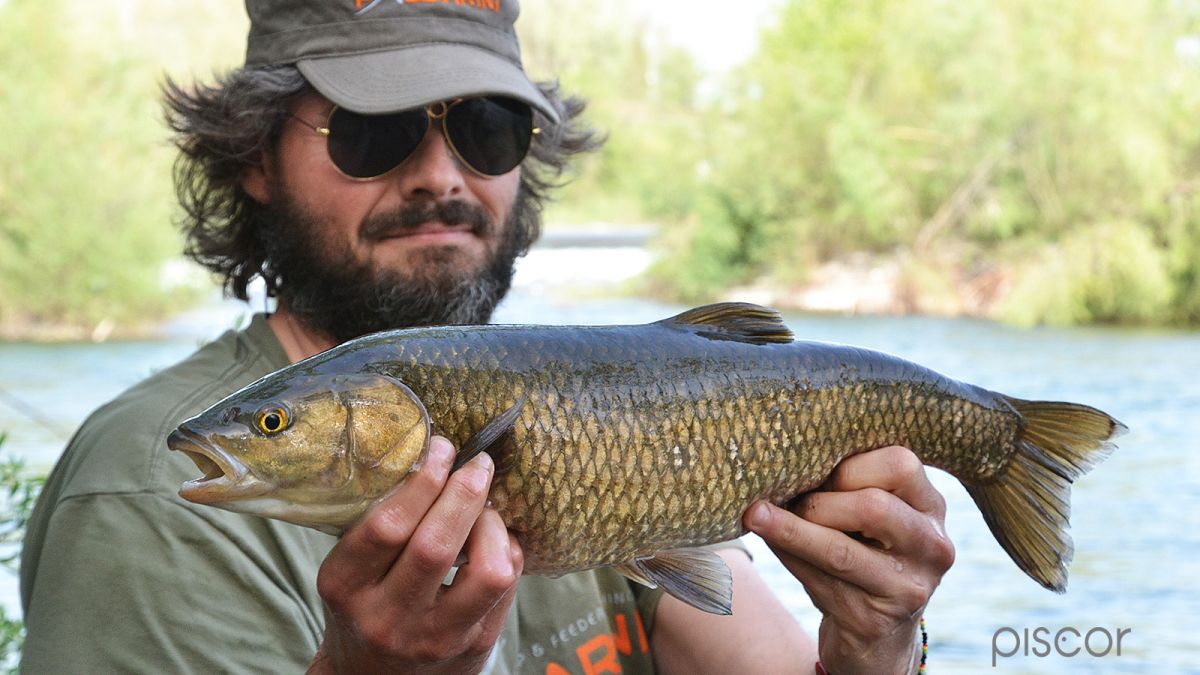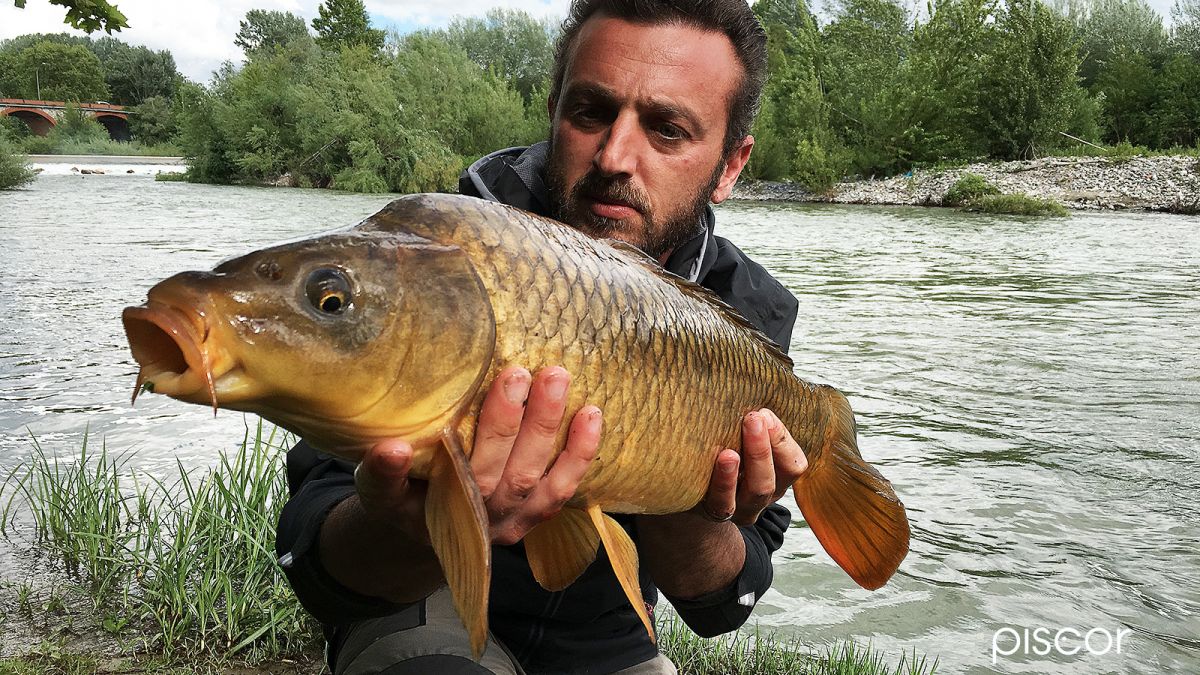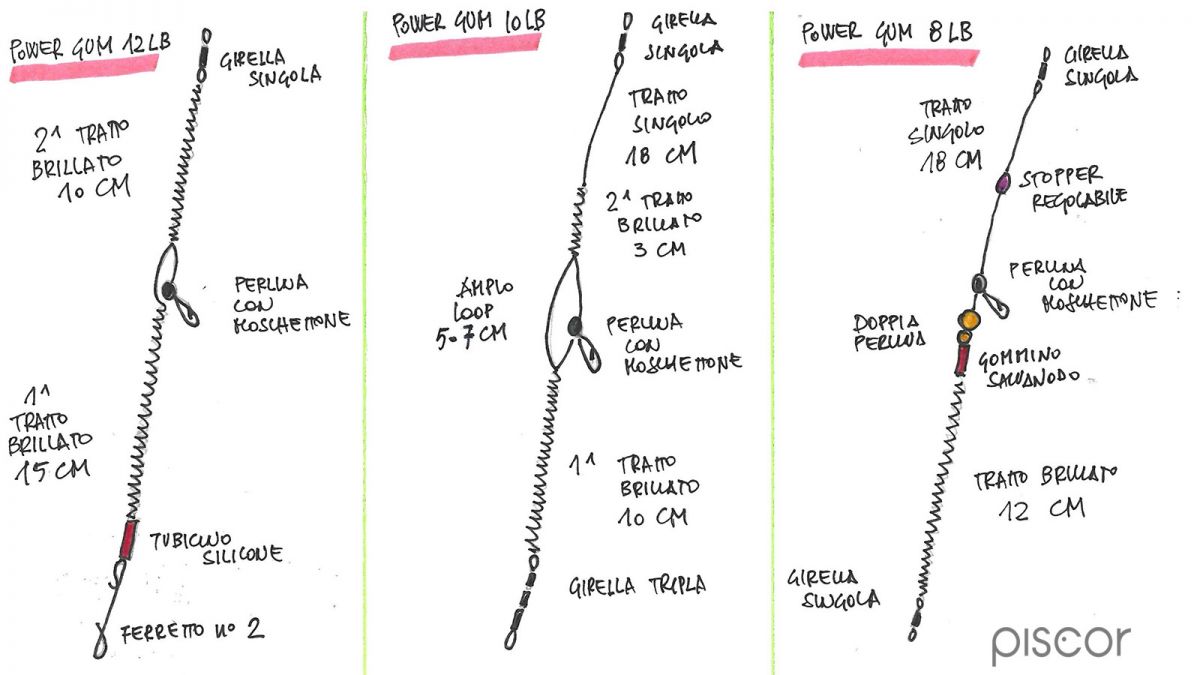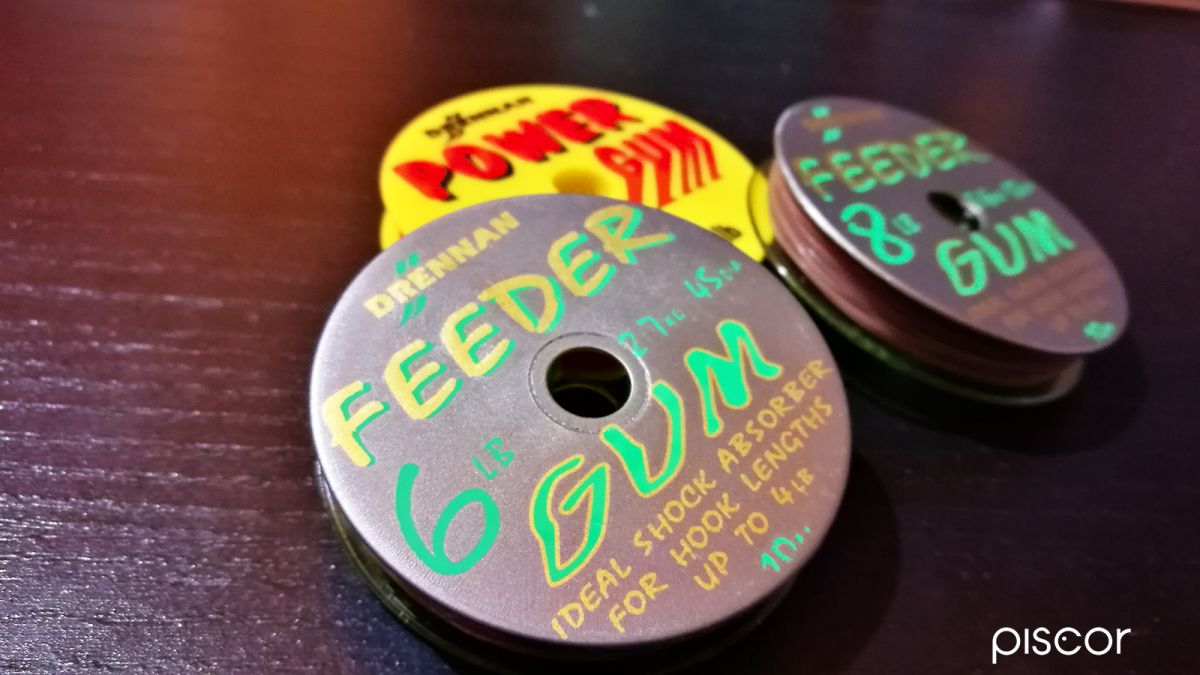Originally designed to produce stop knots on carp fishing lines with characteristics that can avoid abrasions to the main line, the power gum is an elastic thread of excellent strength, and that is well suited to build lines for feeder fishing.
Its use, partly "shined" with a weave about twenty centimeters long where to connect the final, acts as a shock absorber between the rigidity of the main line and the terminal dedicated to the catches.
We recommend the red Drennan range, because it has a gift of perfect camouflage on the bottom of the river.
However, we can also use power gum of other colors, especially playing on the tones of the backdrop where we go to operate and the transparency of water more or less accentuated.
There are dark brown, light power gums suitable for different purposes, but the mimicry factor is never to be underestimated when we go to undermine wild fish.
To build the line, just over half a metre is enough, of which about forty are interwoven to produce the "braid", and the remaining part on which to slide the feeder, thanks to a swivel with snap to apply it, and some beads placed in its containment between the closing knots.
It is important to choose two beads that, just to adapt to this function, have a hole smaller than the size of the knots produced, while the third, larger size will act as a support to the feeder when preparing the throw.
It is advisable that the closing knots of the line in Power Gum are always tightened with a certain intensity, so as to guarantee perfect locking.
When to use the power gum
To clear the field of any reasonable doubt, let's say immediately that the power gum (which from now on we will call PG for brevity) is not the panacea of fishing, especially when it is used in the packaging of a ledgering mount.
There are situations where a normal pater noster, a multiloop or other frames that require the use of nylon only on the reel, perfectly perform the tasks that the fisherman sets.
The PG becomes useful (if not indispensable) in well-defined situations, in spots with particular morphological characteristics and towards fish of a certain type.
Generalizing, we can say that the current, in all its nuances, becomes the ideal field of application especially when the depth is relevant and / or when the size of the fish may become important and we are forced to go down the terminal to have some chance of success.
The PROs constituted by the use of a low PG line are given by the maximisation of the anti-tangle effect, by a discreet capacity to absorb the last escapes of the fish, especially in the final phases of the fight, and by a general excellent adaptability as well as speed and practicality of use.
The CONTRO is made up of the extremes of the above concepts, ie poor cushioning when combined with terminals too thin and excessive rigidity of the low line, not to mention that if we need to "camouflage" the low line the PG must be chosen with the right care.
A PG frame must be used with full awareness of the characteristics of the spot, of the fish and not least of the equipment we are using, from the nylon loaded on the reel to the rod, understood as length and casting weight.
Exasperating all this, it is clear even to the less experienced how mounting a 14 lb PG on an 11' rod with a 1 oz tip, inundating small fish in still water, is useless exercise, if not deleterious, for the purpose of fishing.
That said, we see some of the lines most used to tackle deep waters with a current from medium to sustained, where feeders from 40 to 90 g are used.
Let's see then some basic frames indicating for each type the pound of PG used for packaging and the main characteristics.
DESIGN A) 12 lb PG, double braid for HARD + underwire trim, the silicone grommet on the underwire raises slightly to allow you to hook the final then returns to position to protect the high hook, suitable for terminals from 0.14 to 0.20, the double shining keeps in rigid position feeder up to 70 g.
DESIGN B) Power gum 10 lb with triple swivel to best discharge the twists in fishing in strong currents or long distance, upstream of the first shiny stretch a wide loop allows the feeder to move freely resulting in semi-blocked by the second shining before the single stretch, in this case terminals from 0.12 to 0.18 and feeder up to 50/60 g.
DESIGN C) Power gum 8 lb, the double bead of different diameter allows the shepherd to be well offset, once stretched out, compared to PG, ideal for power amps from 0.10 to 0.16 and feeder up to 30/40 g.
The stopper on the single section of PG allows you to vary the sliding section of the feeder musket. Research fishing frame in the sub-bank or just outside the step where the fish tends to stop in case of strong turbulence or turbid waters.
In general, the unpolished part must be longer than the polished part, the longer the unpolished part and the more accentuated the cushioning effect.
For a correct anti-tangle operation, the braid, when the feeder is laid out, must protrude 8/10 cm from the bottom of the feeder itself.
Do not use heat-shrinkers on the tubes (heat kills the power gum), but a drop of cyanoacrylate glue. The closing knot of the braid is an "8" while the one for tying the high swivel is an improved clinch.
There are many skeptics who say: "I'll take the fish the same even without power gum". Right, but power gum is not used to increase the number of fish caught, but to decrease the number of fish lost...







